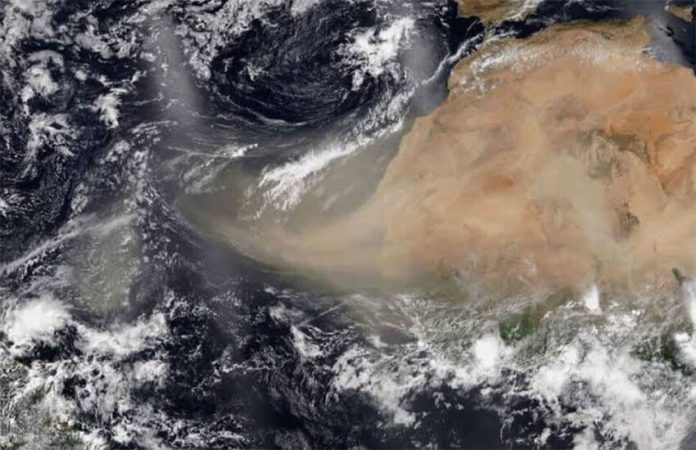The first dust cloud of the year from the Sahara Desert arrived in Mexico on Friday in the annual meteorological event known as the Saharan Air Layer, causing misty, reddish skies especially at sunrise and sunset.
Each year, upwards of 60 million tonnes of dust from arid areas in North Africa – made up of particles of iron, silicon, mercury and phosphorus, among other chemical elements – are dragged by wind currents 7,000 kilometers west to the Americas.
The cloud was expected to remain over the weekend, affecting the Yucatán Peninsula, some parts of the Gulf of Mexico and the northeast as well as parts of the United States.
The clouds are more common in July and August when there is little rain and intense winds in the region, but the mass of dust, which can cover an area similar in size to the United States, arrived early this year.
The National Disaster Prevention Center (Cenapred) said that the natural phenomenon is unlikely to present any health risks, but that people who are sensitive to the thicker air could experience some discomfort.
It added that people with chronic breathing problems, seniors, pregnant women and children should use face masks if dust arrives in large quantities and that people should wash their eyes with clean water if they feel they have been affected.
Conapred also said that if a large amount of dust arrives citizens should cover water sources such as wells and water tanks.
The World Meteorological Organization has previously warned that inhaling the dust can increase the probability of contracting a bacterial infection.
Meanwhile, the natural phenomena is beneficial for the environment: the dust acts as a natural fertilizer and has been found to play a key role in restoring minerals to depleted rain forest soils in South America’s Amazon basin. Studies also suggest that the dry air from the dust stifles the formation of storms and hurricanes.
However, research has shown that it may be harmful to coral reefs if it descends into the ocean before reaching land. One study found that the dust can trigger toxic algae blooms, also known as red tides, that have the capacity to kill large numbers of fish, shellfish, marine mammals and birds.
With reports from El Financiero
